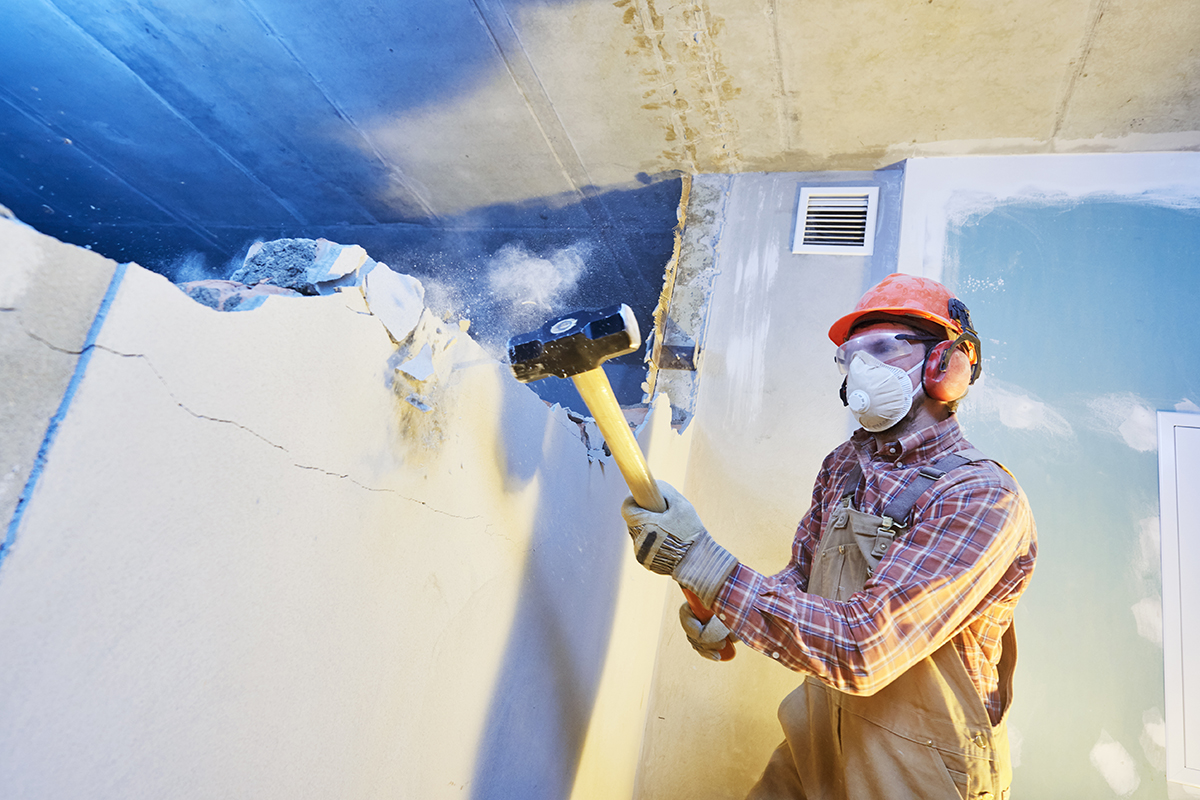
Put down the sledgehammer unless you’ve already got these covered.
Do you have a bit of a fixer-upper on your hands? Or maybe you’re just ready for a major change? Remodeling your home can be a lot of work, but the results, when done well, are well worth it.
Before you get too excited and start tearing down walls and ripping up the floors, read through this guide to keep yourself on track.
Check the space allocation
Having enough space, especially in bathrooms and kitchens, can make or break a home. You can install gorgeous flooring, countertops and fixtures, but if your knees touch the wall or the bathtub when you’re sitting on the toilet, the amenities won’t make up for it. And if you forget to take large kitchen appliances into consideration, you can end up with a cramped space that only looked great on paper.
Before you gut the house and start moving walls, take the time to triple check your measurements.
Draw out your space with accurate measurements of desired appliances included before you change a wall or buy a tub. Make sure there is enough room for doors to open and close with ease. Ideally, you should be able to open your cabinet door and your oven door at the same time.
Remember — it’s easier and less expensive to make changes before you buy new appliances or knock down a wall.
Inspect the structure and foundation
Before you start gutting a home, look for problems that may be hidden beneath the surface. You don’t want to spend a lot of money on new flooring, for example, only to have to rip it out to deal with structure or foundation problems.
Put simply, fixing structural problems is hard, expensive, and requires knowledge and experience that the average new flipper or homeowner doesn’t have. Attempting to minimize costs via DIY efforts can lead to mistakes that make the process even more expensive and difficult.
This step is particularly important if your home (whether it’s a new-to-you fixer-upper or a house you’ve owned for years) has recently gone through heavy rain or flooding, natural disasters, or pest problems.
Shop around for professionals
Don’t wait until you need a professional ASAP before shopping around — you’ll quickly find yourself at the mercy of whoever is available with marginally good reviews. Before you start your remodel, do your due diligence and find professionals who fit your budget and project needs. You’ll thank yourself in the long run.
It’s a good idea to find an electrician and plumber before you start your project. While you can probably learn how to handle small projects like installing an outlet, you’ll need help before your remodel is through. Unless you have a lot of experience, you shouldn’t tackle extensive electrical or plumbing fixes on your own.
A trusted home inspector is also a must-have. Here’s a tip: Find an inspector who is used to houses similar to yours in age, design and location. They’ll be familiar with common problems others may miss.
And don’t just read the report at the end. If possible, walk through the home with the inspector. You’ll learn more and have the opportunity to ask questions as they come up.
Know what sells houses in your area
If you’re remodeling your house in order to sell it, invest in changes that will help sell the house and increase the sale price. Don’t waste your money on updates that don’t give you a good return on your investment.
Do your research. Talk to real estate agents in the area or tour houses in your neighborhood that are for sale. Do buyers looking in the area prioritize large windows or large bathrooms? Do they buy based on roof condition or flooring? Once you identify the factors that help houses in the area sell, build your budget accordingly.
This doesn’t mean you can cut corners. Unless a buyer is looking to flip a home, they’ll expect the whole house to be up to a certain standard. However, if you have to pick between hardwood floors and top-of-the-line kitchen equipment, it’s good to know which one will be more likely to lead to a profitable sale.
Related:
This post first appeared on Zillow.com. To see the original, click here.
